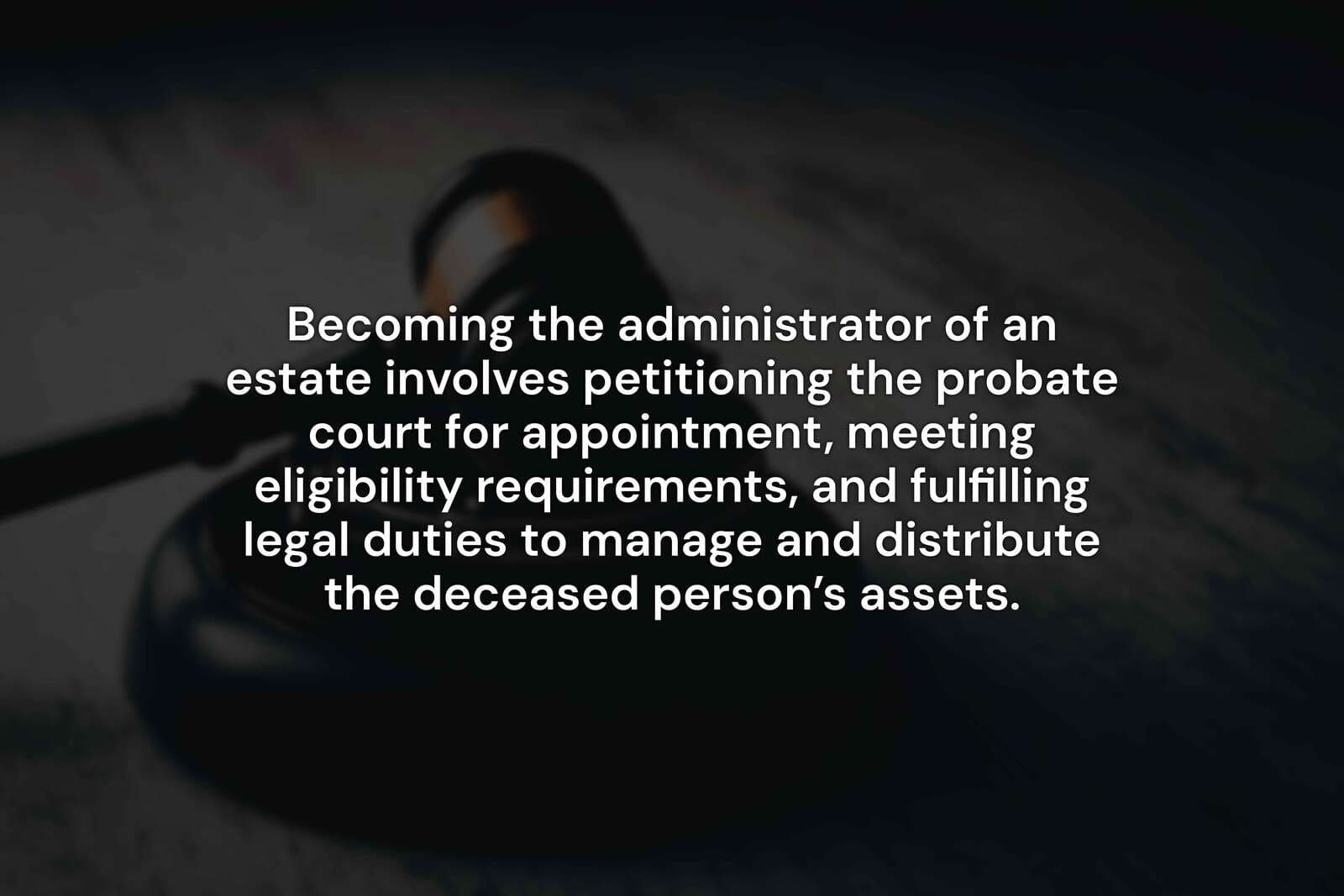Becoming the administrator of an estate involves petitioning the probate court for appointment, meeting eligibility requirements, and fulfilling legal duties to manage and distribute the deceased person’s assets. The role carries significant responsibility and is subject to strict oversight by the court.

When an Administrator Is Needed
An administrator is appointed when the deceased did not leave a valid will or when the named executor cannot serve. In these cases, state intestacy laws determine who is eligible to manage the estate. Courts typically prioritize:
- Spouse or domestic partner
- Adult children
- Other close relatives
- If no eligible family member is available, the court may appoint a neutral third party or public administrator.
Step 1: Determine Your Eligibility
Each state sets specific rules about who can serve as an administrator. Common requirements include:
- Being at least 18 years old
- Having no felony convictions involving dishonesty or fraud
- Being mentally competent to handle legal and financial responsibilities
- Some states give priority to residents over non-residents.
Step 2: File a Petition With the Court
To start the process, you must file a petition for letters of administration with the probate court. This petition typically includes:
- The deceased’s name, date of death, and place of residence
- An estimate of the estate’s value
- A list of potential heirs
- A request for the court to appoint you as administrator
- The court will schedule a hearing to review the petition.
Step 3: Notify Interested Parties
Most states require you to notify all heirs and potential beneficiaries of your petition. This allows them to support or object to your appointment. If objections arise, the court may hold additional hearings to resolve disputes.
Step 4: Take an Oath of Office
If appointed, you must take an oath to faithfully carry out your duties. This oath reinforces your legal obligation to act in the best interest of the estate and its beneficiaries.
Step 5: Post a Bond (If Required)
The court may require you to post a bond as insurance against potential mistakes or misconduct. The bond amount is usually based on the value of the estate. In some cases, the requirement can be waived if all heirs agree or if the court deems it unnecessary.
Step 6: Receive Letters of Administration
Once the court approves your appointment, it issues letters of administration. These documents give you the legal authority to manage the estate’s assets, pay debts, and distribute property.

Step 7: Begin Administering the Estate
Your duties include:
- Collecting and safeguarding assets
- Paying debts and taxes
- Maintaining accurate records of all transactions
- Distributing remaining assets to heirs
- You must follow the court’s requirements for reporting and accounting throughout the process.
Why Legal Guidance Is Essential
Serving as an administrator is a complex and time-sensitive role. A qualified estate planning attorney can help you navigate state-specific requirements, prepare necessary filings, and avoid costly mistakes.

Potential Challenges
Challenges administrators often face include:
- Locating and valuing all assets
- Resolving disputes among heirs
- Managing creditor claims
- Meeting court deadlines
- Proactive communication and professional assistance can prevent these issues from escalating.
Additional Insights on Estate Administration
Can an Administrator of an Estate Take Everything?
No—an administrator must follow the law and distribute assets to heirs according to the will or state intestacy statutes.
Can an Administrator of an Estate Be a Beneficiary?
Yes, but they must maintain impartiality and follow all legal processes.
What Does the Administrator of an Estate Do?
Their responsibilities include collecting assets, paying debts, managing property, and providing court accountings.
How to File for Estate Administrator
Filing involves submitting a petition, notifying interested parties, and obtaining court approval before acting on behalf of the estate.











